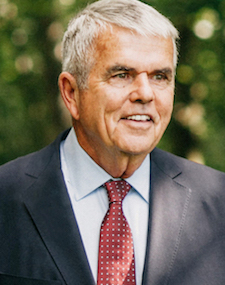By Don Keelan
It must just be a coincidence. In the same week, the Vermont Climate Council issued its report, the mammoth T.S Eliot project reviews were published.
The latter is the eight-volume, 7,148-page effort by Johns Hopkins University Press on “The Complete Prose of T.S. Eliot.” The tome deals with the noted Man of Letters, Nobel laureate, critic, and the most outstanding poet of the 20th Century.
Conversely, the former’s 273-page report is also a mammoth piece of work for a Vermont state committee to publish. It was accomplished in less than nine months with input from dozens of committee and subcommittee members and scores of state employees and consultants.

Don Keelan
VCC had a Dec. 1, 2021 deadline. If the VCC had as much time as the editors of the T.S.Eliot’s work (several years), imagine how much larger the report on Vermont Climate Action Plan would be.
Most everyone who endured a college English literature course should have a good idea of who T.S.Eliot (1888-1965) was and his contribution to the English language. On the other hand, VCC is a creature of the Vermont Legislature’s Global Warning Solutions Act, which was passed into law in September of 2020.
The Act called for the establishment of a 23-member committee, made up evenly by members chosen by the Administration, the House, and Senate. The full committee selected the members of its five subcommittees. Interestingly, only three or four members are representatives from the non-energy business sector, while others with a serious conflict of interest issues were ignored.
The VCC had, and continues to have, one overriding public objective: to reduce Vermont’s gas emissions, derived from nonrenewable energy resources, close to zero by 2050. There are some interim goals and dates; by 2025 Vermont must reduce 2005 gas emissions by 26%.
If we learned anything from the Peter and Hull book “The Peter Principle” (1969 Wm. Morrow & Co.), we would adopt realistic goals. The VCC 2025 goal is unrealistic.
The VCC report was transmitted to the Agency of Natural Resources, and the agency has six months to recommend any proposed legislation. Assuming the Legislators are still in session in July 2022, they will take up the suggested proposals. If such proposals are enacted, it won’t be until 2023 and less than 24 months to reduce the State’s carbon emissions by 26%.
No wonder four of the VCC members appointed by Gov. Scott (who had vetoed GWSA) issued a dissenting letter with the report and noted, “a package of proposals that is overly broad, with many tenets only loosely tied to this work, and lacks detail consistent with the Act’s requirement for ‘specific initiatives, programs, and strategies.”’
Another example is the VCC goal to weatherize 90,000 Vermont homes by 2030. The VCC must have never heard of the phrase “situational awareness.” Today, Vermont has almost zero capacity in the building trades, let alone what must be done in the space of seven years, during which time other State agencies are calling for the building of 10,000 new homes.
In the VCC report, it is noted that the committee needs more time to do further research, analysis, and publish more findings. 300 pages is not enough?
Paper, paper everywhere!
Scores of people and tens of thousands of hours were devoted to this mammoth report. Would it not have been more reasonable if a few dozen recommendations, not 254, were put forward to meet the climate goals? Furthermore, is it in the state’s best interest when we need to address the Vermont’s opioid addiction, the homeless and affordable housing, lack of child care, and the disappearance of our younger population?
The Climate Action Plan is a manifesto, primarily, from a cadre of non-profit organization members, who have a goal to self-perpetuate their organizations and labor unions by creating a 27-year annuity. By doing so, they have control over the lives of Vermont residents and businesses.
Don Keelan writes a bi-weekly column and lives in Arlington, Vermont.



Of course it does, you are in the Socialist Republic of Vermont.
They cannot physically accomplish the goal, and even if they could it would change anything that can be measured on a global scale — which is the announced intention. Thus we have the very stupid and the money grabbing pirates stealing from good people and nothing more.
Crony capitalism is the first cousin to works like this. This work being the first step, where by every bodies money is taken to save the world and is distributed to those NGOS, non profits and NWO pimps who wrote the bill!
The pandemic is giving us a real time glimpse of how catastrophic this plan will be.
The pandemic, mandates lock downs, ventilators, remdesivere, closing of businesses and schools, masking and general chaos and fighting amoung neighbors, many of which are filled with fear.
When all that is needed is to accept medicine and science with alternative treatments, ivermectin do being one, and our citizens would be safe, home, not needlessly dropping dead. But that is t not in the plan.
Same is true with the global warming. There are easy simple solutions to reduce waste and pollution, but you don’t get power and money for that.
Power and money, when that is your idol, you get things like this, you get the NWO and all their pimps. You get sipocialism, where the leaders are more equal than everyone else.